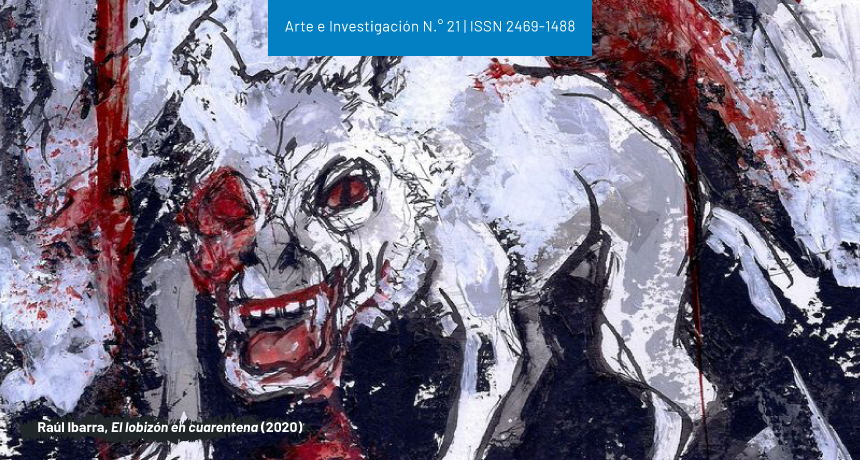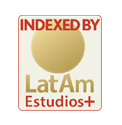Teaching and The Art Archivist
On Strategies for Rereading with A Gender Perspective
DOI:
https://doi.org/10.24215/24691488e085Keywords:
Teaching, Gender, Feminism, Archiving, MitominasAbstract
As Griselda Pollock has already stated, our practices and thoughts currently generate critical dissonances in the face of traditional art history, and it is there where we are enabled to «(...) imagine other ways of seeing and reading visual practices different from those enclosed in canonical training» (2007, p.141). We propose, then, to (re)think strategies and theoretical frameworks that enable us to teach content from other perspectives. We will try to rescue archives of artistic experiences crossed by genders that promote a critical attitude, expanding the limits of visuality and generating questions that allow us to construct new knowledge outside the established canons.Downloads
References
Carnevale, G., & Giunta A. (2007). Archive Tucumán Arde, 1968-2007, Cédula Documenta. Textos de la curaduría, traducción.
Correbo, M. N. (2019). Los cuerpos que no de la historia del arte. O cuando aprendemos solo el relato cisheteronormado. Octante, (4), e022. https://doi.org/10.24215/25250914e022
Foster, H. (2004). El impulso de archivo. Recuperado de: http://sedici.unlp.edu.ar/bitstream/handle/10915/57224/Documento_completo.pdf-PDFA.pdf?sequence=1
Giroux, H. (1990) Los profesores como intelectuales. hacia una pedagogía crítica del aprendizaje. Paidós.
Giunta, A. (Abril de 2010). Archivos. Políticas del conocimiento en el arte de América Latina. Errata. Revista de Artes Visuales (1). Recuperado de: https://issuu.com/revistaerrata/docs/revista_de_artes_visuales_errata_1_issuu
Guasch, A. M. (2005). Los lugares de las memorias: el arte de archivar y recordar. Passatges del segle XX, Revista d’ art, ISSN 1579-2641, (5), pp. 157-183. Recuperado de: http://globalartarchive.com/es/anna-maria-guasch/obras-recientes/los-lugares-de-la-memoria-el-arte-de-archivar-y-recordar/
Jaramillo, C. (2010). Archivos y política / Políticas de archivo. Recuperado de: https://issuu.com/revistaerrata/docs/revista_de_artes_visuales_errata_1_issuu
Pollock, G. (2007). Diferenciando: el encuentro del feminismo con el canon. Crítica feminista en la teoría e historia del arte. México Universidad Iberoamericana, Biblioteca Francisco Xavier Clavigero, 2007.
Rolnik, S. (2010). Furor de archivo. Recuperado de: http://www.estudiosvisuales.net/revista/pdf/num7/08_rolnik.pdf
Rosa, M. L. (2011). La jaula que va desde el sótano al desván. El ama de casa y la locura en la relación arte-feminismo. En: María José Herrera (dir.): Exposiciones de Arte Argentino y Latinoamericano. Curaduría, diseño y políticas culturales. Escuela Superior de Bellas Artes Dr. Figueroa Alcorta.
Rosso, L. (8 de julio de 2016): Derribando mitos. Página 12. Recuperado de: https://www.pagina12.com.ar/diario/suplementos/las12/13-10699-2016-07-08.html
Suzzi, A. L. (2019). Desestabilizar el discurso. Arte feminista del underground porteño. Armiliar, (3), e019. https://doi.org/10.24215/25457888e019
Downloads
Published
How to Cite
Issue
Section
License
Copyright (c) 2022 María Florencia Alonso

This work is licensed under a Creative Commons Attribution-NonCommercial-ShareAlike 4.0 International License.
The acceptance of the manuscript by the magazine means the non-exclusive cession of the property rights of the authors in favour of the editor, who allows the reuse, after publication (post print), under a license Attribution-NonCommercial-NoDerivatives 4.0 International. According to these terms, the material can be copied and redistributed by any means or in any format as long as a) the author and original source of the publication are quoted (magazine and URL of the work), access to the license is provided and whether changes have been made is mentioned; and b) the material is not used for commercial purposes.
The cession of non-exclusive rights means that after the publication (post print) in Arte e Investigación the authors can publish their work in any language, means and format; in such cases it must be mentioned that the material was originally published in this magazine. Such cession also means the authorization of the authors for the work to be collected by SEDICI, the institutional archive of the National University of La Plata, and to be spread in the databases that the editorial team considers appropriate to increase the visibility of the publication and its authors.
Moreover, the magazine encourages the authors to deposit their productions in other institutional and thematic archives under the principle that offering the society the scientific and academic production without any restrictions contributes to a greater exchange of the global knowledge.


































